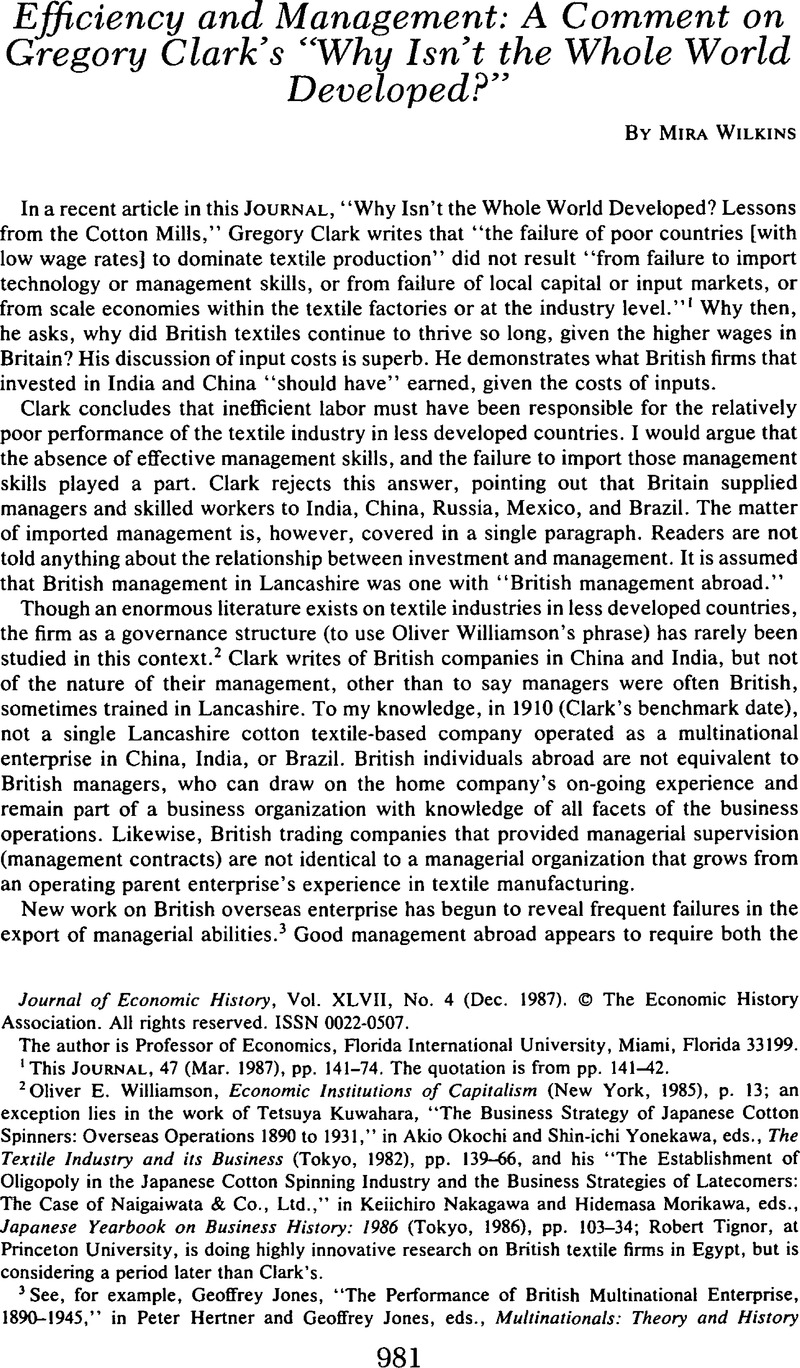Published online by Cambridge University Press: 03 March 2009

1 This Journal, 47 (Mar. 1987), pp. 141–74. The quotation is from pp. 141–42.Google Scholar
2 Williamson, Oliver E., Economic Institutions of Capitalism (New York, 1985), p. 13;Google Scholar an exception lies in the work of Kuwahara, Tetsuya, “The Business Strategy of Japanese Cotton Spinners: Overseas Operations 1890 to 1931,” in Okochi, Akio and Yonekawa, Shin-ichi, eds., The Textile Industry and its Business (Tokyo, 1982), pp. 139–66,Google Scholar and his “The Establishment of Oligopoly in the Japanese Cotton Spinning Industry and the Business Strategies of Latecomers: The Case of Naigaiwata & Co., Ltd.,” in Nakagawa, Keiichiro and Morikawa, Hidemasa, eds., Japanese Yearbook on Business History: 1986 (Tokyo, 1986), pp. 103–34; Robert Tignor, at Princeton University, is doing highly innovative research on British textile firms in Egypt, but is considering a period later than Clark's.Google Scholar
3 See, for example, Jones, Geoffrey, “The Performance of British Multinational Enterprise, 1890–1945,” in Hertner, Peter and Jones, Geoffrey, eds., Multinationals: Theory and History (Aldershot, 1986), pp. 96–112;Google Scholar and Jones, Geoffrey, ed., British Multinationals: Origins, Management and Performance (Aldershot, 1986);Google Scholar Alfred D. Chandler's new work on managerial enterprise helps explain some of the problems the British had in exporting management abroad; see also Wilkins, Mira, “The History of European Multinationals—A New Look,” Journal of European Economic History, 15 (Winter 1986), pp. 483–510.Google Scholar
4 Wilkins, Mira, “The Free-Standing Company, 1870–1914, An Important Type of British Foreign Direct Investment,” Economic History Review (forthcoming).Google Scholar
5 Wilkins, Mira, “Japanese Multinational Enterprise before 1914,” Business History Review, 60 (Summer 1986), pp. 208–13.CrossRefGoogle Scholar
6 Ibid.,Google ScholarChao, Kang, The Development of Cotton Textile Production in China (Cambridge, Mass., 1977), p. 140;Google ScholarKuwahara, “The Business Strategy of Japanese Cotton Spinners,” pp. 158, 165 fn. 27; Kuwahara, “The Establishment of Oligopoly in the Japanese Cotton Spinning Industry,” pp. 103–34.Google Scholar
7 Kuwahara, “The Establishment of Oligopoly in the Japanese Cotton Spinning Industry,” p. 122.Google Scholar
8 Ibid., p. 124; Kuwahara, “The Business Strategy of Japanese Cotton Spinners,” p. 165 fn. 27.Google Scholar